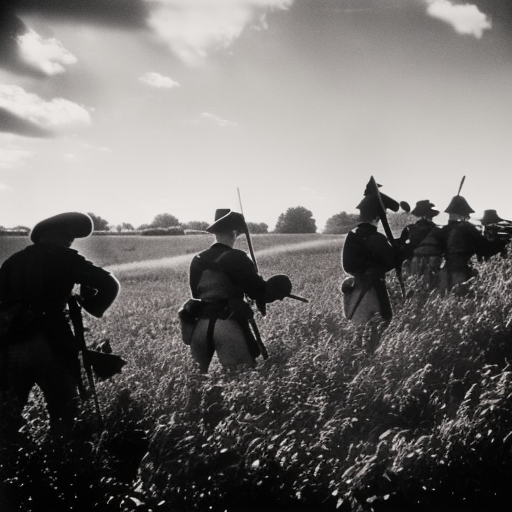Battle of Monmouth Summary:
The Battle of Monmouth was a significant engagement that took place during the American Revolutionary War on June 28, 1778, in Monmouth County, New Jersey. It was fought between the Continental Army, led by General George Washington, and the British Army, commanded by General Sir Henry Clinton. The battle marked a turning point in the war and showcased the capabilities of the American forces.
Background:
After the British evacuation of Philadelphia in 1778, General Clinton led his troops across New Jersey towards New York City. General Washington, aware of the British movement, decided to intercept them and engage in battle. The Continental Army pursued the British, hoping to inflict a significant blow and regain lost territory.
Preparations and Initial Skirmishes:
General Washington positioned his troops near Monmouth Court House, while General Clinton aimed to continue his march to New York City. On June 28, the Continental Army launched a surprise attack on the British rear guard, led by General Charles Cornwallis. The skirmish resulted in heavy casualties on both sides, but the British managed to hold their ground and continue their retreat.
The Main Battle:
As the main battle commenced, General Washington sought to exploit the British vulnerability. However, due to miscommunication and confusion, some American units failed to execute their orders effectively. The intense heat and lack of water exacerbated the situation, causing fatigue and disarray among the troops.
The Heroic Stand of Molly Pitcher:
During the battle, a woman named Mary Ludwig Hays, also known as Molly Pitcher, became a symbol of bravery. As her husband collapsed from heat exhaustion, Molly took his place at the cannon, firing at the British troops. Her actions inspired the soldiers and boosted morale.
Von Steuben’s Influence:
Baron Friedrich von Steuben, a Prussian military officer, played a crucial role in training and disciplining the Continental Army. His efforts paid off during the Battle of Monmouth, as the American troops demonstrated improved tactics and discipline. Von Steuben’s influence contributed to the overall success of the Continental Army.
The British Retreat:
Despite initial setbacks, General Clinton decided to withdraw his troops during the night, leaving the battlefield to the Continental Army. The British retreat allowed the Americans to claim a strategic victory, as they prevented the British from reaching New York City and inflicted heavy casualties.
Significance:
The Battle of Monmouth was a turning point in the American Revolutionary War. It demonstrated the growing capabilities of the Continental Army and boosted morale among the American troops. The battle also highlighted the importance of effective communication and discipline in military operations.
Legacy:
The Battle of Monmouth showcased the resilience and determination of the American forces. It solidified General Washington’s reputation as a capable military leader and boosted the morale of the American people. The heroic actions of individuals like Molly Pitcher became symbols of patriotism and bravery.
In conclusion, the Battle of Monmouth was a significant engagement during the American Revolutionary War. Despite initial setbacks and confusion, the Continental Army demonstrated its growing strength and resilience. The battle marked a turning point in the war and showcased the capabilities of the American forces. The heroic actions of individuals like Molly Pitcher and the influence of Baron von Steuben contributed to the overall success of the Continental Army. The Battle of Monmouth remains an important event in American history, symbolizing the determination and bravery of the American people in their fight for independence.












